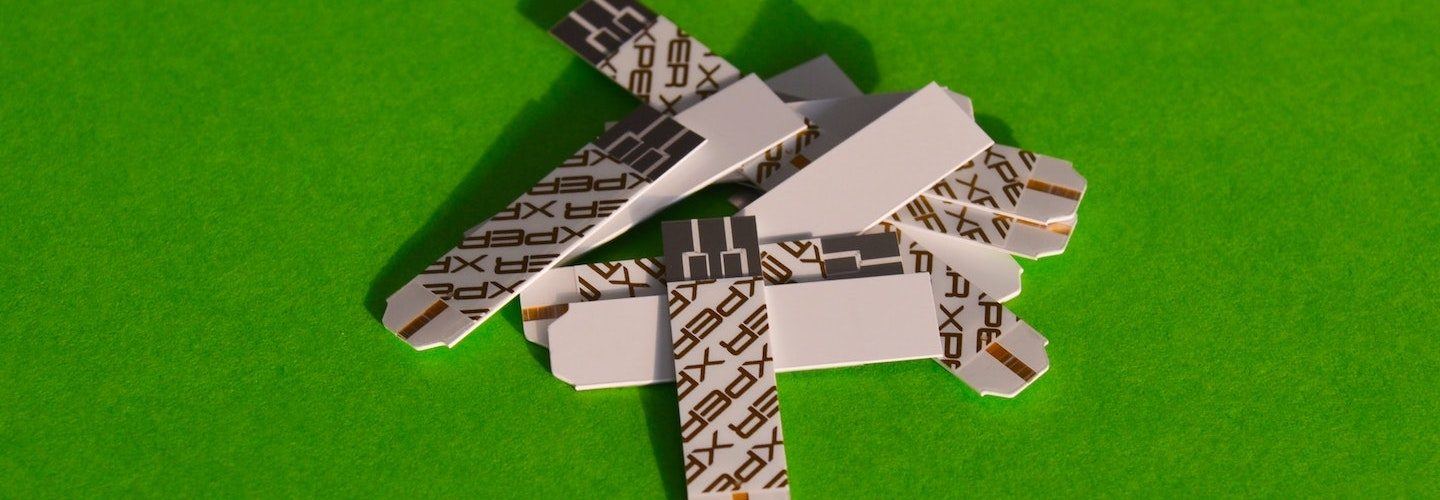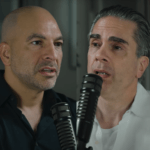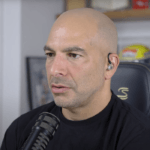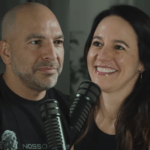In this “Ask Me Anything” (AMA) episode, Peter and Bob dive deep into blood glucose and why it matters so much with respect to metabolic health and longevity. They explain the need to pay close attention to metrics like average blood glucose, glucose variability, and peak glucose numbers. Additionally, Peter explains why he encourages all his patients, even nondiabetics, to utilize a continuous glucose monitor (CGM) which gives important insights that traditional lab testing and metrics consistently miss.
If you’re not a subscriber and listening on a podcast player, you’ll only be able to hear a preview of the AMA. If you’re a subscriber, you can now listen to this full episode on your private RSS feed or on our website at the AMA #24 show notes page. If you are not a subscriber, you can learn more about the subscriber benefits here.
AMA #24 Sneak Peak:
We discuss:
- The problem with traditional blood tests and metrics for determining metabolic health [1:10];
- The superior insights from a continuous glucose monitor [6:15];
- Why lower is better than higher: average glucose, glucose variability, and glucose peaks [12:00];
- Deep dive into average blood glucose and the importance of having the lowest average blood glucose possible [14:45];
- Deep dive into glucose variability and why less variability is better [33:15];
- Example of how HbA1c and traditional measures could catch metabolic issues too late [41:45];
- Postprandial dips in blood glucose as a predictor of subsequent hunger and energy intake [43:00];
- Exploring the idea that the suppression of fatty acids is actually causing hunger rather than a low blood glucose [49:45];
- Deep dive into peak glucose and why lower peaks is better [57:15];
- What the best rodent models tell us about the impact of peak glucose levels [1:06:25];
- Why Peter encourages all his patients to wear a CGM [1:14:30]; and
- More.
*WATCH A PREVIEW OF AMA #24 ON YOUTUBE*
The problem with traditional blood tests and metrics for determining metabolic health [1:10]
In terms of testing, Peter favors the oral glucose tolerance test (OGTT) over things like fasting glucose and HbA1c measurements as those can be misleading
Some great questions from subscribers:
- “With insulin measurements. And also wearing a CGM to get a better sense of glucose homeostasis. My understanding is that OGTTs and CGMs are typically reserved for people with diabetes.”
- Why does Peter find these tests useful in “healthy” people?
- What is Peter looking for when assessing someone’s glucose levels?
- What does he like and hate to see?
- How does Peter define normal versus abnormal control of glucose?
- If I’m not diabetic, do I have anything to worry about here?”
- “Are you able to do a breakdown on what you look for on different people’s CGM data and what you would advise to improve their numbers similar to the AMA you did on lab tests?”
Peter’s reaction to these questions:
- “These are the perfect questions, the most salient questions, the most important questions and this might become by extension one of the most important AMAs we do in terms of the aggregate impact it could have on health and longevity.”
“The mainstream medical system is just so out of sync with what I believe the future of medicine is going to be.” —Peter Attia
Defining T2D and HbA1c:
- Type 2 diabetes is defined as having a hemoglobin A1c (HbA1c) concentration greater than 6.5% which it corresponds to an average glucose of approximately 130 milligrams per deciliter
- The way it HbA1c works is it measures the concentration of glycosylated hemoglobin. So it’s taking out red blood cells and it’s looking at how much glucose is stuck to them
- the more glucose that is stuck to them, the more you can infer that the average concentration of glucose is higher during the period of a red blood cell’s life
This is potentially misleading in both directions because, for example:
- if a red blood cell has a very short life — GI bleeding issues, patients with gastritis, et cetera, women with a heavy menstrual period — So people who are losing significant amounts of blood have a higher turnover of red blood cells, they’re going to have an artificially low hemoglobin A1c
- Conversely, people who have red blood cells that stick around a very long time — people with a microcytic pattern, meaning they have very small red blood cells that are less likely to get chewed up in the splanchnic system which is where we ultimately break down red blood cells — they’re going to have an artificially elevated hemoglobin A1c because their red blood cells are living longer on average than the typical person which is about 90 days
*The broader point:
- Unhelpful to simply say if your hemoglobin A1c is above 6.5 and you have type 2 diabetes, you have “a disease”
- If it is below 6.5 you are normal or even if we go one step further and say well there’s a pre diabetes which is defined as 5.7 to 6.4 and those people we have to watch out for
- but anybody at 5.6 and down is completely normal
- As though there’s some enormous difference between 5.6 and 5.7 or 6.4 and 6.5
- on the one hand I understand the need to simplify things, I think oversimplification is erroneous and I think we should view these as a continuum
- glucose at the average level is a continuum
- “I am a far greater proponent of [continuous glucose monitors] (CGM)”
The superior insights from a continuous glucose monitor [6:15]
Continuous glucose monitor (CGM)
- As its name suggests, it measures glucose continuously
- “And while I do not have diabetes and while most of my patients don’t have diabetes, many of them along with I wear this device”
- This podcast will get into the “why”
Using a CGM:
- Your CGM connects to your phone and every five minutes it is spitting out a number in a 24 hour fashion
- For Peter, his last 24 hours I’ve averaged about 90 milligrams per deciliter
- His variability/standard deviation has been about 9 or 10 milligrams per deciliter
- His peak level was 102, his nadir was 77 — So a range of 77 to 102
- There are reports that will spit out your average glucose over 1 day, 7 days, 14 days, 30 days, 60 days, 90 days, etc. along with the standard deviation and more
- A CGM is not actually measuring in the blood, it’s measuring in the interstitial fluid, a “remarkable technology”
- It’s able to impute what the glucose level is in the blood without actually having to sample the blood
Bob asks Peter: Have you looked at your CGM and compared say like your three month data to your HbA1c?
- Yes, “there’s no comparison” says Peter
- Peter has something called beta thalassemia minor (or he carries the trait for beta thalassemia) which means he has tiny little red blood cells
- His mean corpuscular volume and mean corpuscular hematocrit are very low, but he’s not anemic because his body makes up for it by having a lot of them
- In result, he has a normal hemoglobin hematocrit oxygen carrying capacity but his hemoglobin A1c always runs high
- He’s measured it as high as 5.8, and the lowest he’s ever measured is 5.1
- After wearing a CGM for almost six years, if he goes back and checkers his A1c versus his trailing 90-day CGM, it almost always suggests that the hemoglobin A1c is higher by 0.5 to 0.8
- If he measures a 5.7 on the hemoglobin A1c, it’s overstating his blood glucose and it should really be about a 5.1 or a 5.2
- It’s also possible to see the opposite situation in some people where their CGM is actually showing a much higher level of average blood glucose than what their hemoglobin A1c predicts
- So it’s important to understand hemoglobin A1c is a measurement that predicts average blood glucose
- CGM actually gives you average blood glucose and you can reverse engineer and impute at A1c
- The latter is much more interesting because you’re directly measuring the variable of interest
Peter’s hope for the future of medicine and doctor’s visits
- The obvious reason why everyone isn’t wearing a CGM is that they are cost prohibitive and certainly back then they were quite involved
- But they’re getting better and better and better, says Peter
- “I’d like to believe that there will be a day when you go to your first visit at your doctor or prior to your first visit with your doctor they mail you a CGM and you wear it for 30 days and that data is looked at by your doctor and by the time you arrive in the office he or she has that information.”
- “And instead of looking at an A1c or a fasting glucose they can really look at what your glucose excursions have looked like over a period of time in the real world.”
For example, some docs (including Peter) will do this for blood pressure (using a sphygmomanometer)
- Peter says, “Most of our patients there’s a particular blood pressure monitor we fancy and we have them keep it at home. We have a special log.”
- “Unfortunately in the wearable space blood pressure is still far from primetime”, says Peter, “but I think there’s going to be wearables in the blood pressure space soon”
Why lower is better than higher: average glucose, glucose variability, and glucose peaks [12:00]
Important CGM metrics
For so-called “normal people” or the non-diabetic population, Peter would argue the following 3 points:
1 — lower average blood glucose is better
- A hemoglobin A1c of 5.1 is better than a hemoglobin A1c of 5.5 even though neither of those people are anywhere near having type 2 diabetes
2 — The more you can minimize glucose variability the better.
- And of course glucose variability is very difficult to measure without a CGM
- Using a GGM, the standard deviation is the obvious mathematical tool to do that, and lower is better
- For instance—
- Say you have two people who both have an average glucose of 100 milligrams per deciliter (which corresponds to about an excellent HbA1c of 5.0 to 5.1)
- And one of them has a standard deviation of 10 milligrams per deciliter and the other one has a standard deviation of 20, the person with the lower one is better off.
3 — Minimizing glucose peaks is important (irrespective of the average glucose and variability)
- Obviously the more peaks you have it’s going to, all things equal, push up glucose and it will certainly increase variability
- But Peter would argue specifically that glucose peaks are problematic and that we want to minimize them
How Peter uses these metrics with patients:
{end of show notes preview}






Thank you, interesting.
Ms Bellardo MD does not agree with you on Twitter.
Thats amazing that you mentioned this because I follow her on IG and she went off on this. Legitimately have thought about posting all the trials from this podcast. I think its hilarious that when someone doesn’t understand something OR isn’t aware of the literature out there, they automatically debunk it as “pseudoscience”. I think this podcast does get granular to the point that it may be difficult to generalize to the majority of the US population and that most people would do well with eating whole foods, mostly plants with strength training etc etc. I think having hard data to support why we recommend keeping blood sugars low is the key point here.
Does Peter and the team have a recommended CGM?
Thanks for the PODs!
I use the NutriSense CGM monitor (https://www.nutrisense.io/), which relies on the Dexcomm hardware. I’ve been using it for about 12 months now and really like the phone interface with various statistics and graphs but I’d have to say the real ‘magic’ for NutriSense is the team of nutritionists who track my glucose response to food, sleep, stress, exercise, etc and make incredibly helpful recommendations. This model is much more effective than if I was trying to optimize glucose response by myself. Glenn
@Glenn: are you sure about NutriSense using Dexcom? Their website indicates they use the Abbot Freestyle Libre:
https://help.nutrisense.io/en/articles/3348332-step-2-putting-on-your-cgm-device
https://help.nutrisense.io/en/articles/4356213-tips-for-successful-sensor-placement
@Tim: Peter is on the record as favoring the Dexcom G6. The G7 should be coming out soon, and I’ll be interested to hear his take.
Could you identify representative CGM models that do the type of continuous recordings and send out alerts?
Very interesting episode! What are your thoughts about taking alpha-lipoic acid to reduce post-prandial blood glucose spikes?
Hi Kimberly: lipoic acid is worthless for regulating glycemia in nondiabetics. See for instance:
https://www.jissn.com/content/8/S1/P32
What is not clear to me is what the actual goals you are trying to achieve.
What are the ideal numbers Peter is looking for? Fasting glucose?30′,60′,90′,120′, 180′, 240′ after a meal?
Following up on the above question re: CGM of choice. The Dexcom G7 looks interesting based on limited data? Consider offering an inside track for subscribers with your preferred vendor……please/thanks.
I have free access to a few Abbott FreeStyle Libre CGMs and have been using it. How do they compare to other brands like Medtronics in terms of accuracy?
This was pretty insane. Based on past interviews and recent bloodwork showing slightly elevated fasting glucose, just yesterday I put on a CGM on and will do so for one month. Next week will be getting a GCT+insulin as well to try and understand whats going on with me. 49, where were you when I was 29 and going to live forever? 🙂
Also, the answer to all this is fasting and lean body mass right?
Please consider an AMA on effects of exercise (type, timing, amount) on CGM. Can one exercise their way out of a metabolically unhealthy state without significantly altering diet?
Thanks.
there’s a particular blood pressure monitor we fancy
For us members, can u tell us the brand/model?
This was super helpful. Based on past podcasts about CGMs, I used my Mom’s (she refuses to use it) for 60 days. It gave me some great insights into what caused peaks and how exercise impacted my readings. I implemented some of my “findings” for the next 3 months and then got my A1c for my annual physical. My doctor was impressed with the reduction and asked what I had done. Armed with this new information, I’m going to push her for a prescription for my own CGM. I’m already healthier at 58.5 than I was at 50, but every little bit helps! Thank you for pushing us to aim for better health rather than just suggestions for treating us when we are sick. These tools aren’t just for the sick!
I often see peaks over 150/160 during my fasted Crossfit-type workouts. I work out at 5:30 am with dinner typically ending by 6:30 pm the night before. The workouts involve very high intensity and usually involve strength and metabolic conditioning. It seems when I see these high peaks, my workout suffers (feel lethargic and bonk). Would this be indicative of a fuel shortage? Does this indicate the need for a pre work out carb source?
Please recommend a CGM and is it necessary to get a prescription to attain one?
You mentioned that it doesn’t take much of a rise of blood glucose level to inhibit lypolysis. Can you quantify that at all, for example, “beyond 110 causes a 75% reduction”?
Thank you for the fantastic data!
I am technically in the prediabetic category. A1C bounces from 5.6-5.9, started around three years ago. Almost 50 now, athletic, professional firefighter/RN. No real improvement in A1C after 30 lb weight loss. Can’t seem to drop any more weight. I’m self educating, PCP’s don’t dive into this near enough- How can I get a Dexcom? Prescription required? Help??
Does your practice ever accept new patients?!?!
I also would appreciate a recommendation for a CGM monitor as well as detailed instructions on 1) how to use it, 2) how to interpret the results, and 3) how to talk to my doctor about the results assuming he does not have expertise with this assessment tool and ways to adjust behavior based on the results. Thank you!
Do you recommend a specific CGM brand and model.
I’ve used the CGM from Nutrisense but its accuracy is variable.
thank you
Interesting podcast. Which CGM woud you recommend for your non-diabetic patients? Can anyone purchase without a script?
@Jeffrey, @David, @Antoinette, @Martin, @bill, @Daisy: Peter is on the record as favoring the Dexcom G6. See his interview with Dexcom CEO Kevin Sayer:
https://peterattiamd.com/kevinsayer/
One does need a prescription to get one; there are several startups offering access to a CGM with a consumer-friendly app targeted at nondiabetics, but they’re all using an older-model Abbott Freestyle Libre, which is less accurate than either Dexcom models or the newer Abbott models. The G7 should be coming out soon, and I’ll be interested to hear Peter’s take on how this compares to the G6.
Thanks!!
Unfortunately, several people in the diabetes community are insane and don’t think anyone without diabetes should get to have a CGM. Also, most doctors won’t prescribe a CGM if you don’t have diabetes. Imagine that, according to some, you shouldn’t be allowed to collect data about your own body and optimize your life because someone else suffers from a condition. I can understand if supplies are limited, but that’s a temporary problem. Manufacturers would love to offer these to the broader community.